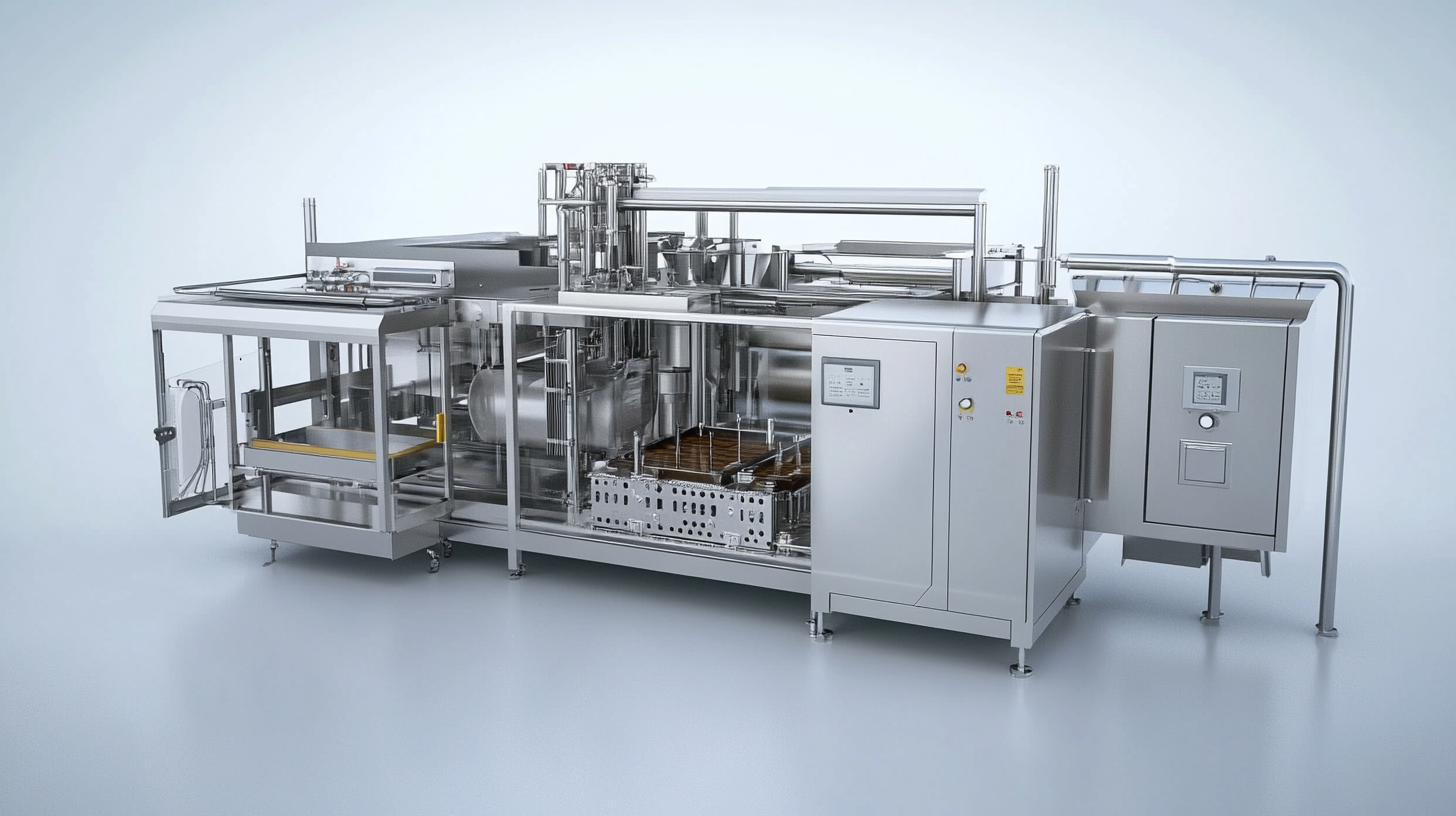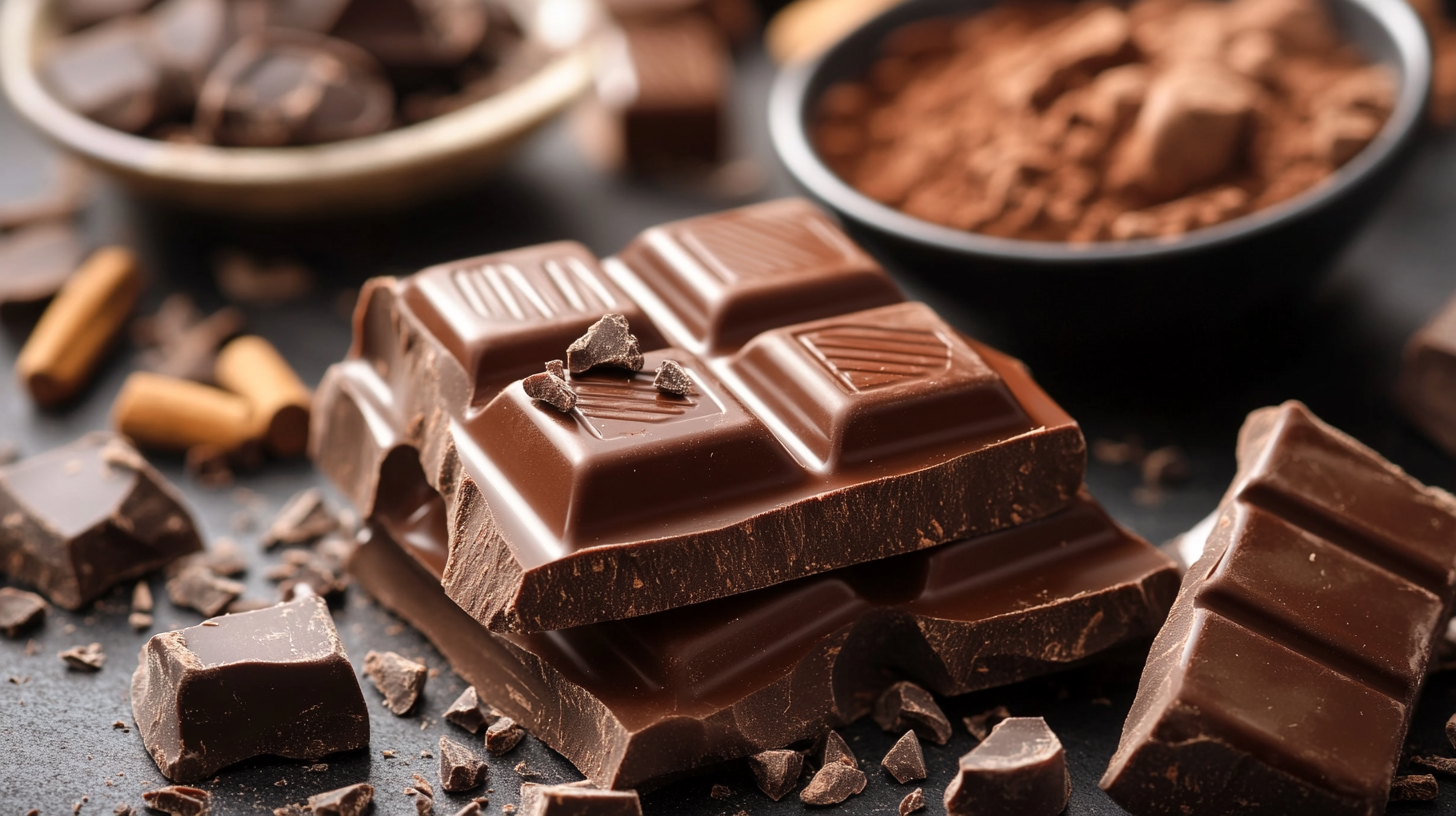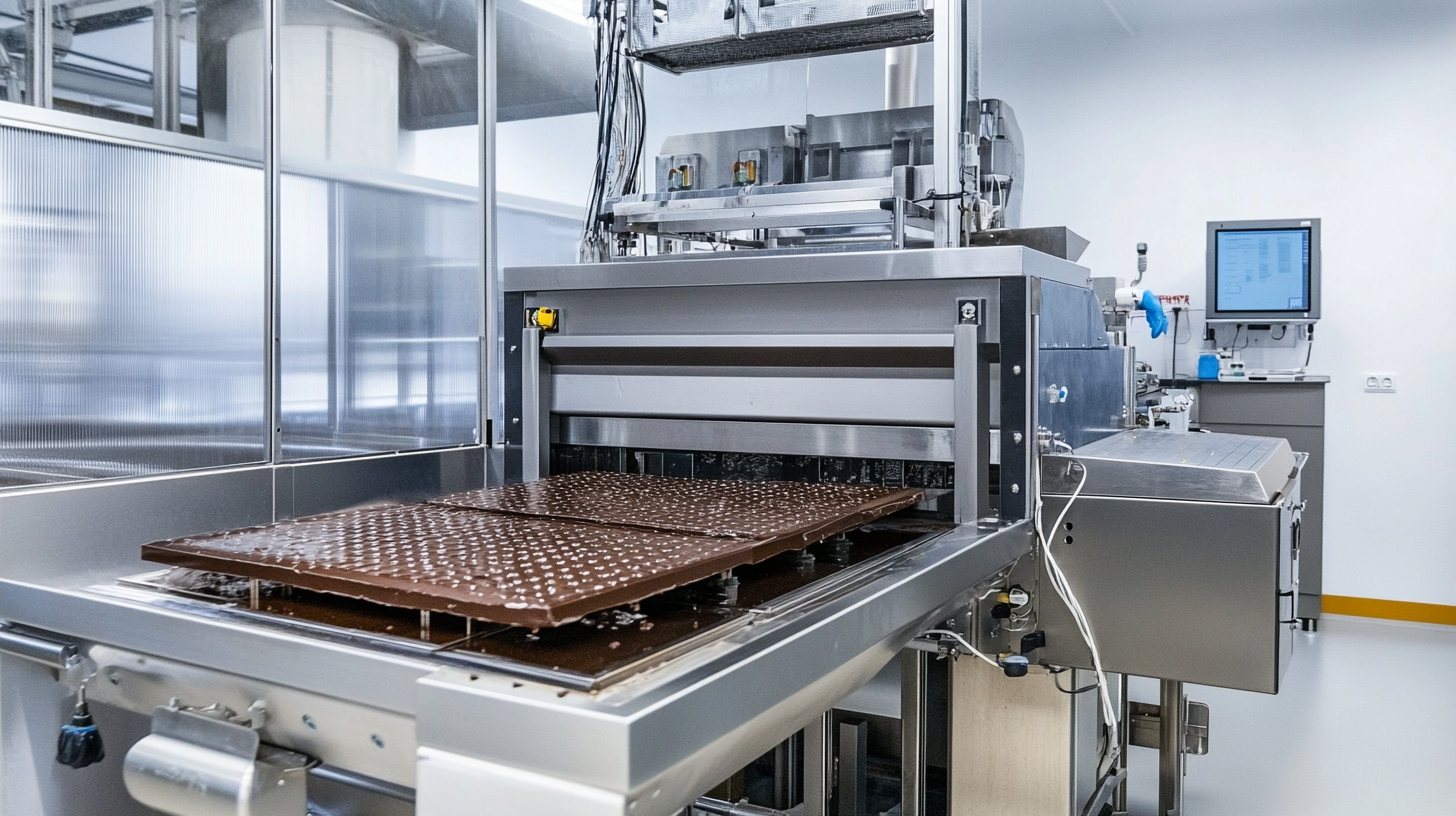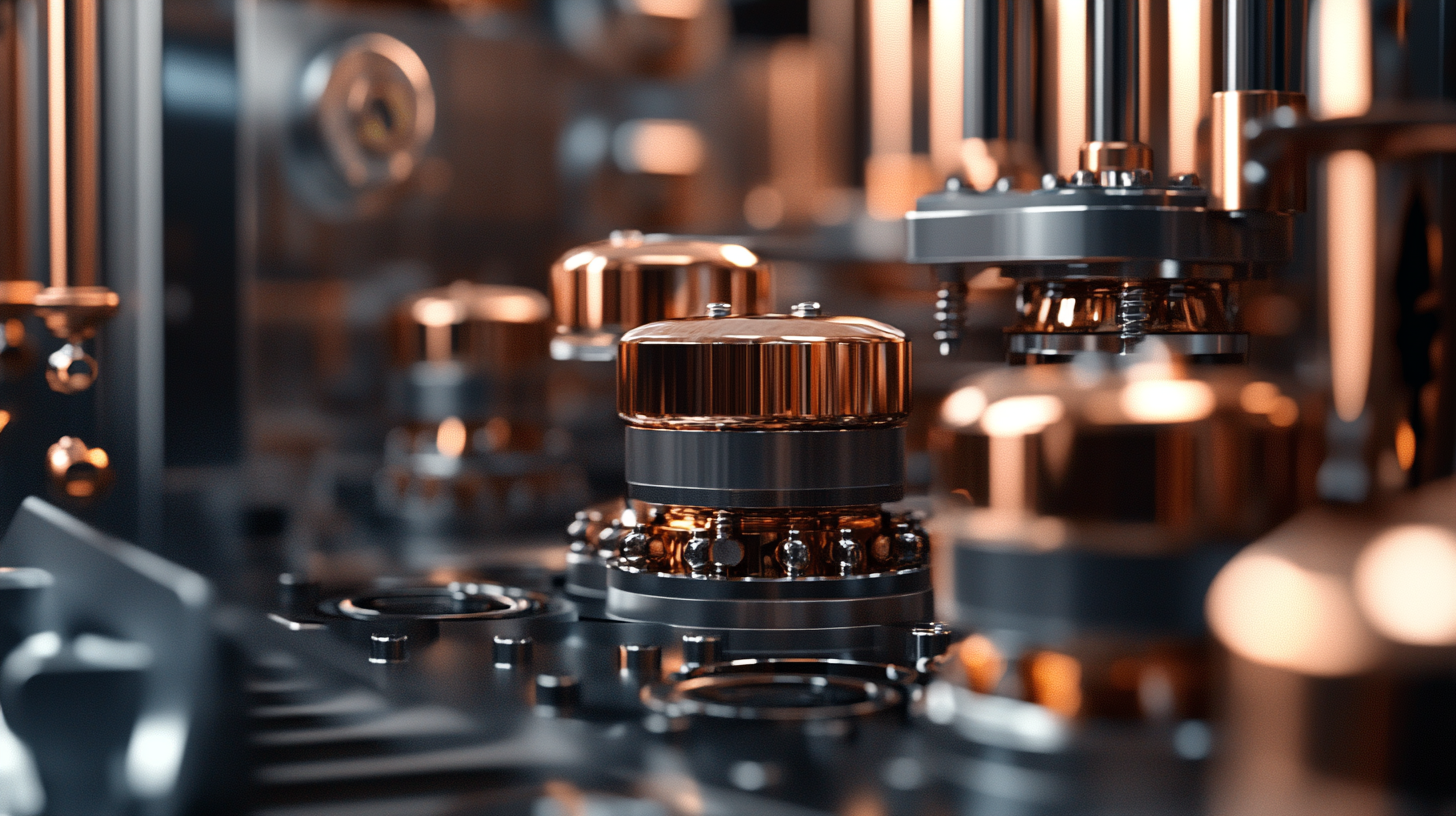Future Innovations in Industrial Chocolate Tempering Machines by 2025
As the global chocolate market continues to experience exponential growth, with forecasts estimating it to reach $170 billion by 2024, the demand for efficient production methods becomes increasingly critical. In this context, the Industrial Chocolate Tempering Machine plays a pivotal role in ensuring that chocolate products not only meet consumer quality expectations but also adhere to the rapidly evolving standards of food safety and production efficiency. According to a recent report by MarketsandMarkets, the chocolate processing equipment market is projected to grow at a CAGR of 5.6% from 2021 to 2026, emphasizing the need for innovations in technology that enhance the tempering process.
With advancements in automation, precision control, and energy efficiency, future innovations in Industrial Chocolate Tempering Machines by 2025 are set to revolutionize how chocolate is produced. Manufacturers are increasingly recognizing that investing in state-of-the-art tempering machines not only reduces production costs but also significantly improves product quality. The global shift towards sustainable practices further underscores the importance of developing machines that utilize cleaner energy sources and minimize waste. As we explore the future landscape of chocolate processing technology, it is essential to consider how these innovations can contribute to a more sustainable and profitable industry.

Advancements in Chocolate Tempering Technology: What to Expect by 2025
The chocolate industry is witnessing a transformative wave of innovations that promise to enhance the efficiency and quality of chocolate tempering processes by 2025. With the constant evolution of technology, advancements in chocolate tempering machines are expected to streamline production, reduce waste, and improve flavor profiles. One noteworthy trend is the integration of smart technology into tempering machines, enabling precise temperature control and monitoring through IoT connectivity. This ensures that chocolatiers achieve optimal texture and sheen in their products, responding quickly to any discrepancies during the tempering process. Moreover, automated systems will likely dominate the landscape, substantially reducing the need for manual labor while increasing output. These advanced machines are being designed with user-friendly interfaces that allow chocolatiers to customize settings with ease, which enhances both productivity and creativity in chocolate making. By adopting AI and machine learning algorithms, chocolate tempering machines will not only learn from previous batches but also adapt to various chocolate types, providing unparalleled consistency in results. Additionally, sustainability will play a crucial role in the design of future tempering technology. Manufacturers are expected to focus on eco-friendly materials and energy-efficient processes, reducing the carbon footprint of chocolate production. This commitment to sustainability, combined with technological advancements, will position the industry for growth while contributing positively to the environment. As we look towards 2025, the chocolate tempering landscape is set for revolutionary changes that will redefine the artistry and excellence of chocolate making.

Integration of IoT and AI in Industrial Chocolate Tempering Machines
The integration of Internet of Things (IoT) and Artificial Intelligence (AI) into industrial chocolate tempering machines is set to revolutionize the chocolate manufacturing process by 2025. In recent years, the food industry has witnessed a surge in AI applications, aimed at enhancing operational efficiency, product quality, and resource optimization. According to a recent report from the Food Industry Research Institute, the implementation of AI technologies is projected to lead to a 20% reduction in waste during the chocolate tempering process, highlighting the significant potential for sustainability in production.
IoT-enabled tempering machines will allow manufacturers to monitor and control the chocolate tempering process in real-time. Data collected from sensors can be analyzed using AI algorithms to optimize temperature settings, humidity levels, and stirring speeds, ensuring optimal crystallization of cocoa butter. A study published in the International Journal of Food Engineering found that automating these parameters can increase production efficiency by up to 30%, reducing both time and energy consumption.
Moreover, the predictive capabilities of AI can assist in routine maintenance of the tempering machines, minimizing downtime and unexpected failures. By analyzing historical data and identifying patterns, systems can alert operators to potential issues before they escalate. The Global Chocolate Market Report indicates that such innovations in machinery can enhance product consistency, a crucial factor in meeting consumer demand for high-quality chocolates. As we move towards 2025, the chocolate industry will undoubtedly benefit from these technological advancements, leading to a smarter, more efficient production landscape.

Sustainability Trends: Eco-Friendly Materials in Chocolate Machinery
The future of chocolate manufacturing is set to embrace a wave of sustainability trends, particularly in the realm of industrial chocolate tempering machines. As the industry moves towards more eco-friendly practices, manufacturers are increasingly investing in machinery that utilizes sustainable materials. According to a recent report by MarketsandMarkets, the global chocolate machinery market is projected to grow to $5.5 billion by 2025, with sustainable innovation spearheading this growth.
One significant trend is the integration of biodegradable and recyclable materials in the production of tempering machines. These advancements not only reduce waste but also align with consumer demands for environmentally responsible products. Research from Technavio shows that over 70% of consumers prefer brands that are committed to sustainable practices, prompting manufacturers to adopt eco-friendly solutions to maintain a competitive edge.
Another noteworthy development is the implementation of energy-efficient technologies in chocolate machinery. The International Energy Agency (IEA) reported that industrial sectors, including food manufacturing, can reduce energy consumption by 30% through the adoption of advanced technologies. This not only decreases operational costs but also lessens the environmental impact of chocolate production. With innovations like induction heating and automation systems, future tempering machines will not only temper chocolate perfectly but will also significantly minimize their carbon footprint.
The path to 2025 is clearly marked by an increasing commitment to sustainability in chocolate machinery. As the industry continues to innovate towards greener practices, we can expect to see a more eco-conscious landscape that honors both quality and environmental responsibility in the art of chocolate making.

Enhancing Efficiency: Automation and Robotics in Chocolate Processing
The chocolate industry is on the brink of a major transformation, particularly in the realm of chocolate tempering machines. As we approach 2025, advancements in automation and robotics are set to redefine the efficiency of chocolate processing. Automation has already proven itself a lifeline for food processing, especially during crises where demand surges. With technologies like the Industrial Internet of Things (IIoT) and lights-out manufacturing, companies can minimize downtime, ensuring that production keeps pace with consumer needs.
Nestlé's innovative application of artificial intelligence and machine learning exemplifies how major players are enhancing their operations. By utilizing AI, the company is streamlining processes, which could soon extend to chocolate tempering machines as well. This integration enables manufacturers to monitor and optimize every stage of production, ultimately reducing waste while maintaining high quality.
Hershey’s move towards a modular approach in its manufacturing lines highlights the industry's pivot toward flexibility and efficiency. By reinventing traditional methods with robotics and automation, Hershey is not just improving output; it's also setting new standards for adaptability in an ever-changing market landscape. The shift towards smart factories, driven by robotics and AI, is paving the way for a future where chocolate tempering processes are faster, more precise, and environmentally sustainable.
Future Trends in Customization and Flexibility of Tempering Machines
As the chocolate industry evolves, so does the technology behind its production, particularly in the realm of industrial chocolate tempering machines. By 2025, we can expect significant advancements in customization and flexibility, driven by innovative approaches to manufacturing and the integration of artificial intelligence. These changes will allow chocolatiers to tailor tempering processes to meet specific product requirements, enhancing both efficiency and quality.
The future of tempering machines will likely see increased adaptability, enabling manufacturers to produce a wider variety of chocolate textures and flavors with minimal downtime. This flexibility will be crucial in responding to shifting consumer preferences and market trends, ensuring that production lines can be swiftly reconfigured to create bespoke products. AI will play a pivotal role in this transformation, optimizing processes in real-time and predicting maintenance needs, thus reducing operational disruptions and enhancing productivity.
Moreover, as customization becomes standard, chocolate producers will begin to explore personalized offerings that cater to individual tastes and dietary requirements. This trend may include the ability to adjust the tempering parameters based on ingredient variations, fostering a more innovative and responsive manufacturing environment. As the synergy between humans and AI strengthens, we anticipate a chocolate landscape that values adaptability, precision, and creativity, setting the stage for a new era in the confectionery sector.

